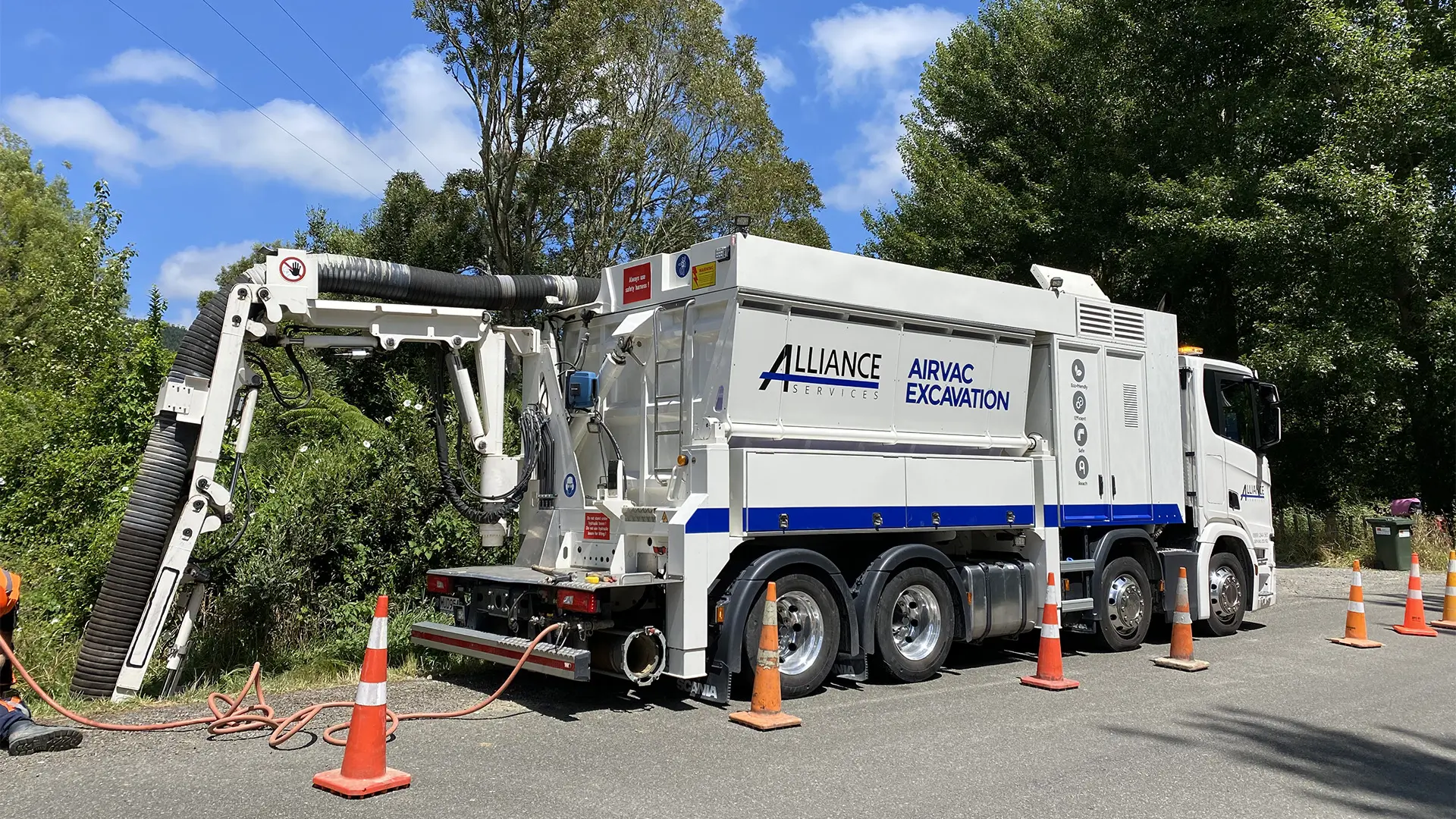 Air Vacuum Excavation (Knifing)
Air Vacuum Excavation (Knifing)

What is Air Vacuum Excavation? Similar to hydro vacuum excavation, its a non-destructive digging method that uses pressurized air to loosen soil and a vacuum system to remove the debris to excavate with a the lowest probability of damage or injury to workers.
This technique offers a safe and precise alternative to traditional mechanical excavation methods, especially around sensitive underground utilities.
It's particularly valued for its ability to minimize damage and injury to buried infrastructure such as power cables, gas lines, water pipes, and fiber optic utilities.
What is the method of Air-Vacuum Digging?
First the operator uses "Pressurized Air" to break up and loosen the soil, rather than the water jet used in hydro excavation. This process creates a dry spoil, which can be highly beneficial in certain situations.
Secondly the operator uses "Vacuum Suction" for the loosened soil and debris, which is then sucked up into a storage tank by a powerful vacuum system, similar to the hydro excavation process.
Lastly the "Debris Tank" holds the collected material, and is stored in this tank until it can be disposed of appropriately, or possibly used to refill the excavation site after the necessary work is completed.
What are the main benefits of NDD Air Vacs?
Less Mess: Air excavation produces dry spoil, which can be easier to manage and reuse for backfilling the excavated site, reducing the need for additional soil.
Reduced Environmental Impact: Since it doesn't use water, air excavation eliminates the need for water sourcing and the handling of muddy slurry, making it a cleaner option in sensitive environments.
Safer for Utilities: It reduces the risk of damaging underground utilities, similar to hydro excavation, but without the potential for water to conduct electricity or cause erosion around buried infrastructure.
What are Air-Vac Disadvantages?
Efficiency in Certain Soils: While versatile, air excavation might be less efficient in very compact or heavy clay soils compared to hydro excavation, which can more easily break up and remove such materials.
Dust Control: The process can generate significant amounts of dust, which might require additional dust suppression measures to protect workers and nearby sensitive areas.
Noise Levels: Air vacuum excavation equipment can be quite loud, potentially causing disturbances in residential areas or environments with noise restrictions.
Cost and Availability: Similar to hydro excavation, the specialized equipment required for air vacuum excavation represents a significant investment, and the availability of such equipment or experienced operators might be limited in some areas.
Summary Conclusion of Air-Vacuums
Air vacuum excavation is particularly suitable for projects where water use is restricted, where the management of spoil is a concern, or in environments where minimizing the environmental footprint is a priority.
Despite some limitations, its benefits make it a valuable tool in the construction, utility, and infrastructure sectors, especially for tasks requiring high precision and safety.
